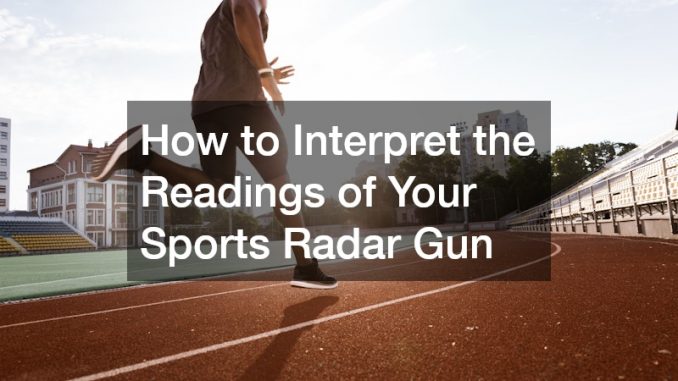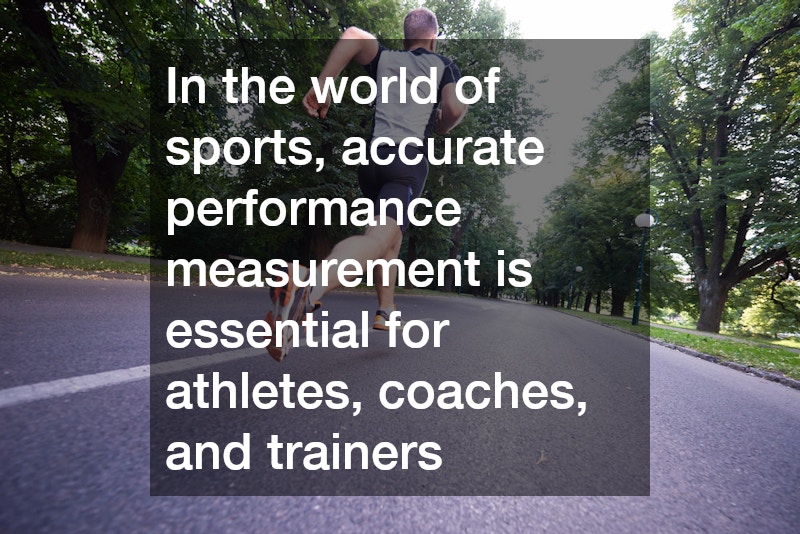

In the world of sports, accurate performance measurement is essential for athletes, coaches, and trainers. One of the most valuable tools for capturing performance metrics is the sports radar gun. This device allows coaches to measure the speed of athletes in real-time, whether it’s a baseball pitch, a tennis serve, or a sprinting athlete. However, interpreting the readings from your radar gun can sometimes be confusing.
This article will guide you through understanding and making the most of the readings from your sports radar gun.
Understanding the Basics of Your Sports Radar Gun
Before diving into interpretation, it’s essential to understand how a radar gun works. The device emits radar waves that bounce off a moving object, returning to the gun to calculate speed based on the time it takes for the waves to return. This process allows you to obtain instant readings, making it a valuable asset for training and performance analysis.
Most radar guns display speed in miles per hour (mph) or kilometers per hour (kph). Familiarizing yourself with these units of measurement is crucial, especially when comparing speeds across different sports or regions. Additionally, some radar guns have advanced features that can provide various readings, including average speed, maximum speed, and even video recording capabilities.
Reading the Display
The display of your radar gun will typically show a numerical value representing speed, often accompanied by the unit of measurement. When you take a reading, ensure you are focused on the actual speed value rather than the decimal points. For instance, if the display shows “85.7 mph,” focus on the “85” as your primary measurement. This clarity will help you avoid confusion during training sessions.
It’s also essential to understand that radar guns may take a moment to stabilize after being turned on or after capturing multiple readings. Allow a brief period for the readings to become consistent, especially if the device is new or hasn’t been calibrated in a while.
Contextualizing the Data
Interpreting the readings from your sports radar gun goes beyond simply looking at the number displayed. It’s crucial to consider the context of each measurement. Factors such as weather conditions, athlete fatigue, and surface type can all affect speed readings. For example, a baseball pitcher may throw faster on a dry day compared to a humid one, as moisture in the air can create drag.
When analyzing data over time, track the context in which the measurements were taken. This approach will provide a more comprehensive understanding of the athlete’s performance. Create a chart or log that includes not just the speed readings but also notes about conditions, fatigue levels, and any other relevant factors.
Average vs. Maximum Speed
One of the critical features of many radar guns is the ability to track both average and maximum speeds. Average speed is calculated over a series of measurements, while maximum speed reflects the highest recorded speed during a session. Understanding the difference between these two measurements can help you evaluate an athlete’s performance more effectively.
For instance, if a baseball pitcher consistently throws at a maximum speed of 90 mph but their average speed is 85 mph, it may indicate inconsistency in performance. In this case, the focus can shift to training methods that improve overall consistency, rather than simply aiming for a higher maximum speed.
Identifying Trends Over Time
Using your sports radar gun over multiple training sessions allows you to identify trends and improvements in an athlete’s performance. Regularly recording speed measurements can help coaches see whether an athlete is improving, plateauing, or even regressing. Graphing this data over time provides a visual representation that can be invaluable for both coaches and athletes.
When reviewing trends, consider setting specific performance benchmarks for athletes to strive toward. This approach not only provides motivation but also helps create a clear path for training focus. For example, if an athlete’s speed is improving steadily, set new goals to challenge them further.
Utilizing Video Analysis
Many modern sports radar guns come with video capabilities that allow you to record the athlete while measuring their speed. Combining radar gun readings with video analysis can significantly enhance your ability to interpret performance. By reviewing video footage alongside speed data, you can identify specific aspects of technique that may be affecting performance.
For example, a video analysis may reveal that an athlete’s throwing mechanics are inconsistent, leading to variations in speed. This insight allows coaches to provide targeted feedback and implement specific drills to improve technique, ultimately leading to better performance outcomes.
Training Applications
Once you’ve interpreted the readings from your radar gun, the next step is to apply this data to training. The readings should guide your training sessions, helping you tailor workouts to target specific speed improvements. For instance, if a baseball player struggles with consistency in their throwing speed, you might incorporate drills focused on mechanics or strength training to enhance performance.
It’s also important to celebrate improvements and milestones with athletes. Recognizing when they achieve new personal bests can motivate them to continue pushing their limits. Whether it’s through verbal acknowledgment or a simple tracking system, keeping morale high is crucial for athlete development.
Understanding how to interpret the readings from your radar gun is essential for maximizing its benefits. By familiarizing yourself with the basics, considering contextual factors, and using the data to inform training strategies, coaches can enhance athlete performance significantly. Regular use of a sports radar gun not only provides immediate feedback but also aids in long-term performance tracking and improvement. As you continue to leverage this powerful tool, remember that it’s not just about the numbers; it’s about how those numbers translate into better athletes and more successful coaching outcomes.
.
